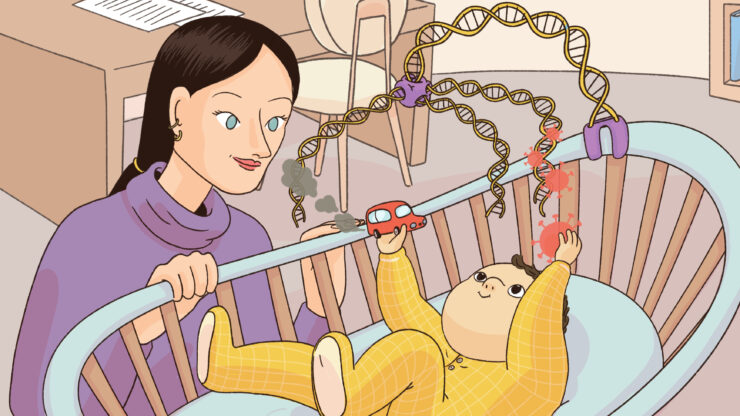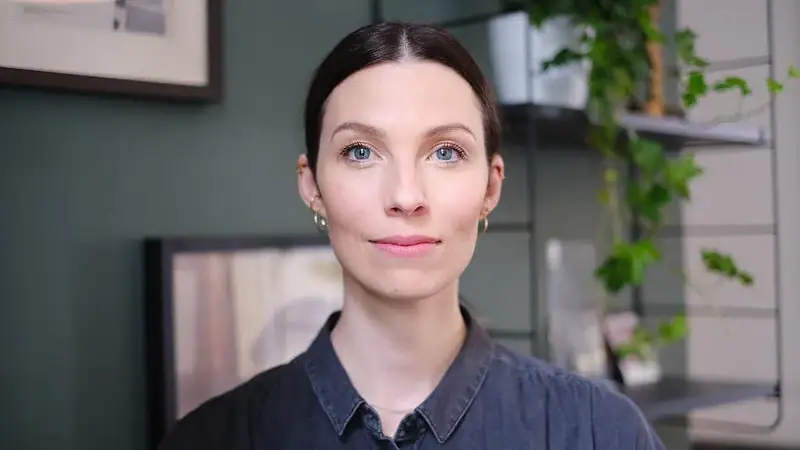The developmental psychologist fascinated by biomarkers
Laurel Raffington uses epigenetic biomarkers to measure the long-term impacts of childhood interventions

Laurel Raffington studies how children’s early environments become embedded in their biology and may affect later outcomes. She is looking for ways of measuring lifelong trajectories in response to interventions while children are still children. Annie Brookman-Byrne finds out more.
Annie Brookman-Byrne: What is the focus of your research?
Laurel Raffington: Genetic influences interact with children’s early life environments to influence their lifelong trajectories. I want to understand how that interaction in childhood leads to later educational and health outcomes. It can take decades for environmental impacts on biology to express themselves. For example, the impact on health of a childhood in poverty may not be apparent until later life , when aging-related diseases start appearing.
I’m curious to see if it’s possible to start measuring the predictors of those later impacts while children are still young. Rather than waiting for decades for impacts to become visible, can we use biomarkers to identify lifelong influences while we are running an intervention?
“The impact on health of a childhood in poverty may not be apparent until later life.”
ABB: What are biomarkers?
LR: Biomarkers are measures of a biological state that are relevant to health or can be used to monitor the effects of a treatment. For example, some genetic biomarkers based on DNA are related to a child’s risk of having learning difficulties, like attention-deficit hyperactivity disorder. Those biomarkers do not change in response to an intervention or in the course of development, because our genes don’t change. However, how genes are expressed does change in response to our environments and as we grow older. This is where epigenetic biomarkers come in.
Epigenetics controls how genes and environments interact. It also allows the same DNA in different cells to be used differently – sending messages like “I am a brain cell, not a bone cell, so use ‘brain genes.’” Recently, it was discovered that epigenetic biomarkers can track with high precision someone’s biological age. Those biomarkers are called “epigenetic clocks.” In adults, they have become popular biomarkers of cognitive aging as well as health and mortality. I study epigenetic clocks and epigenetic biomarkers of cognition in children. Can these things help us measure and understand how childhood environments affect adult outcomes?
ABB: How might your research on biomarkers help children?
LR: Biomarkers are useful for researchers, clinicians, and policymakers, if they can tell us something that is not easily measured or that can be measured early. For instance, it is very difficult, if not impossible, to measure a person’s cumulative exposure to air pollution. But that information may be stored in our bodies, in our epigenome. Similarly, measuring general cognitive performance in 1-year-old toddlers is very difficult. However, we know that development early in life is important to later cognitive performance, so impacts of interventions on cognition may be largest when interventions are delivered early. Yet one has to wait years or even decades to see if an intervention has had lasting effects on cognition, education, or income.
I am hopeful that we can use biomarkers to evaluate in the short term the long-term impact of interventions. Similarly, we might be able to identify kids who are more likely to respond positively to an intervention, and other kids who are more likely to respond negatively to that same intervention. This could be a major contribution to childhood intervention work.
There are also potential clinical applications. We might be able to use biomarkers to identify children who are at risk of cognitive delays or learning difficulties. Clinicians could use that information to offer those children early support.
ABB: Can you tell me about interventions you’re working on?
LR: Baby’s First Years is a big US study I’m working on with many colleagues. We are looking at the impact of giving a monthly cash gift of either $333 or $20 to low-income mothers, starting at the birth of a child, on that child’s as well as the mother’s epigenome, mental health, etc. Does a larger cash gift cause changes in four-year-old children’s biomarkers of biological aging and cognition, as measured in the epigenome, even if there are, so far, no measurable behavioral or health impacts? The findings could ultimately influence social policy.
I have also started connecting with researchers who have completed other types of early-life interventions and who have collected saliva samples from kids – for instance, a study in Brazil looking at a parenting intervention. I hope to connect with people who are delivering high-quality interventions to benefit children and are trying to find out whether their interventions are having epigenetic impacts – and if so, whether those matter for children’s learning and development.
“I am hopeful that we can use biomarkers to evaluate in the short term the long-term impact of interventions.”
ABB: What changes have you seen in biomarker research?
LR: The algorithms that we use to quantify biomarkers of biological aging and cognition are new, having been developed only two or three years ago. They allow us to look across the genome, rather than just at one specific gene. This is useful because human traits are biologically very complicated and involve many genes. Because the biomarkers are new, there is a lot to discover.
Much of my work in this area has involved probing biomarkers in children’s saliva. Collecting saliva has the advantage of being non-invasive, as children are only required to spit into a tube. This is much different from drawing blood with a needle or using big MRI machines to generate biomarkers from images of the brain. Children can also give saliva in school, so there’s the potential to collect it in different settings. Epigenetics differs between different cells, however, so we need to validate our measures to make sure saliva can produce biomarkers that tell us something useful about children’s development and wellbeing.
ABB: What are the biggest mysteries in this field?
LR: Let’s assume we’re able to establish that biomarkers can predict the long-term outcomes of child benefit payments or a parenting intervention. How much change is possible later in life?
For example, imagine that an educational intervention influences children’s performance on math tasks and their school outcomes, but a similar intervention in adults doesn’t have a significant impact on their math skills. How much do the childhood environment and development set a person’s trajectory, and how much of that trajectory can be shifted later by different interventions or environments? The answer will be complex, depending on the nature of the intervention, how long it lasted, how much impact it had, and which traits are still affected in adulthood.
Many people are intuitively interested in these questions. As an adult, can I change my biology? Can I influence my own outcomes, given my prenatal and early life history? That’s a big mystery. Our focus on early childhood is super interesting, because it matters for life.
Footnotes
Laurel Raffington is a German-American researcher who studied experimental psychology and cognitive neuroscience. She completed her PhD in biological psychology at the Humboldt-Universität zu Berlin. During her postdoctoral research at the University of Texas at Austin, she ventured into twin studies and genomics. In 2022, she received funding from the Max Planck Society to start a research group. The Biosocial group is an interdisciplinary and international team of researchers studying the interplay of genes and childhood environments. Several of their projects are probing and developing epigenetic biomarkers in children. She lives in Berlin with her German-Jamaican partner and their two children. Laurel is a 2025-2027 Jacobs Foundation Research Fellow.
Laurel on LinkedIn, X, ResearchGate, Bluesky.
This interview has been edited for clarity.

